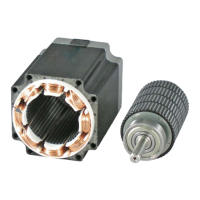November 4, 2009 9
Stellaris® Stepper Motor Reference Design Kit
Overview
Stellaris Reference Design Kits (RDKs) from Texas Instruments accelerate product development
by providing ready-to-run hardware, a typical motor, and comprehensive documentation including
hardware design files. Designers without prior motor control experience can successfully
implement a sophisticated motor control system using the Stepper Motor Control RDK (Stepper
RDK).
Using the RDK
The recommended steps for using the RDK are:
Follow the Quickstart Guide included in the kit.
The Quickstart guide will help you get the motor up and running in minutes. It also contains
important safety information that should be read before using the RDK.
Use the RDK GUI software to evaluate and optimize motor performance.
The RDK GUI gives real-time access to more than a dozen operating parameters. Parameters
and data transfer between the RDK control board and PC over a USB cable.
Customize and integrate the hardware and software to suit an end application.
This User's Manual and the Software Reference Manual are two important references for
completing your project. Software can be programmed in the motor control board using either
the RDK GUI software or using a JTAG debug interface (available from leading development
tools vendors).
Features
The Stepper RDK's primary application is driving NEMA17, NEMA23, and NEMA34 stepper
motors rated at up to 80 V at 3 Amps. The Stepper RDK uses software-based chopper control in
order to operate the motor at both high torque and high-step rates. The Stepper RDK has the
following features:
Advanced chopper control of bipolar stepper motors
Flexible platform accelerates integration process
Fast and slow decay modes
Full-Step, Half-Step, Micro-Step, and Wave modes
High step rates up to 10,000 steps/sec (with suitable motor)
Programmable holding current
Integrated USB Virtual COM port
Bootloader for firmware upgrades over serial port
Support for external debugger through standard 20-pin ARM header
CHAPTER 1

